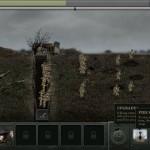

From tech to household and wellness products.

#Warfare 1917 cheats movie#
No movie can provide a final answer to the question of what it means to film a war.

1917 doesn’t solve the problem that was posed 100 years ago by the historical convergence of modern warfare and modern image-making technology. The mission of the two soldiers at its center, the cheeky, chatty Blake and the quieter, more battle-scarred Schofield, is elemental and, in its way, pacifist: to prevent a pointless massacre from taking place, thereby at least lessening if not ending the suffering that surrounds them. World War I remains perhaps the 20 th century’s least understood war, and 1917 makes no attempt to delve into the historical conditions that produced the conflict or to guess at what soldiers at the front might have understood their larger purpose to be. But 1917 features more famous faces in smaller roles: Benedict Cumberbatch, Mark Strong, Richard Madden, and Andrew Scott (who will probably be grateful when people stop referring to him as Fleabag’s “ hot priest”) all leave a mark as combatants the boys encounter along the way, some of them wise, some hotheaded, some cynical, some more or less permanently drunk. He’s said he chose two mostly-unknown performers for the lead roles so audiences would make no assumptions about who would make it out alive. Mendes, who’s spent much of the two decades since he won an Oscar for American Beauty as a theater director, excels as a director of actors. But the horror of witnessing what a trench actually was-a shallow ditch in which young men waited to be sent “over the top” to die, while at all times risking death, from disease or flying shrapnel, in the trench itself-lends these scenes an added dramatic urgency as the protagonists move through a backdrop of claustrophobic squalor.
#Warfare 1917 cheats how to#
When your set is confined to a space as narrow as those sandbag-lined crevices in the French countryside actually were, there aren’t many other choices of how to stage a scene.
#Warfare 1917 cheats series#
Shoulder Arms and The Battle of the Somme, opposed though their approaches were, shared a similar shot, used in one movie to comic effect and in the other as a dramatic device: A camera at eye level accompanies one or more characters down a series of winding trenches. Neither war propaganda nor antiwar advocacy, it told the simple human story of a nervous new conscript enduring the miseries of life in the trenches. draft but had been rejected for being underweight.) But Shoulder Arms was a worldwide smash, beloved by isolationists and pro-engagement types alike. (As it turned out, he had tried to register for the U.S. Before Charlie Chaplin released Shoulder Arms in 1918, just two weeks before the signing of the armistice, his close friends warned him that it was a bad idea to make a comedy about the war in progress, especially since Chaplin had been criticized in the British press for failing to enlist in his country of origin.


 0 kommentar(er)
0 kommentar(er)
